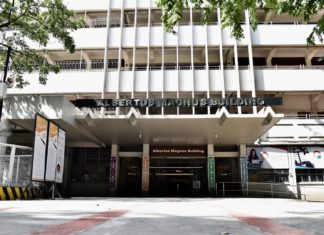RUMORS circulating in social media platforms about kidnapping, homicide and robbery around UST recently fanned campus hysteria and exposed how Thomasians and other Filipinos are very prone to fake information all because of what we could call as “media illiteracy.”
The rumor started when an Artlets student was “stabbed to death” near Espana and allegedly there was an “active shooter” roaming around Lacson Street.
In addition, there was allegedly hold-up in Padre Noval Street and snatching in Dapitan Street. The alleged crime incidents spread like wildfire in Facebook and Twitter, so much so that even ABS-CBN made an online report of them.
But the Manila Police District debunked the news reports, there were no such incidents.
We are all guilty of the act of disseminating unprocessed controversial information, especially crime incidents, without checking their authenticity. It is understandable that we want our loved ones to be wary of the alleged incidents but by absent-mindedly clicking retweet or share button, we’re in line of joining the soldiers of yellow propaganda. We are turning our backs to the truth.
While we bash Mocha Uson for spreading fake news, aren’t we of the same wavelength if we share an information without verifying the content?
It’s laughable that the cause of the frenzy on social media was only a misinterpreted information caused by a “concerned” citizen who failed to cross-check the facts. Imagine your time for studying, resting and creating your plates were occupied by just superfluously retweeting and fuming about the incidents that weren’t true. Although we can’t fully blame the source, it can be likened with pointing one finger at him and pointing four at ourselves. Let’s save each other our time and end the stigma of fake news when it reaches us.
Social media has been an avenue for spreading fake news because it is the perfect place to search for confirmation of our view points. The common mistake that people do is share news whose import appeals to his bias and dismiss news that does not.
Let’s not be like other people who support misinformation and share it just because their family and friends share the same sentiment.
The battle to reclaim the truth and to form an informed public is long and tough. The first step to checking fake news is healthy skepticism – we should always check the source of the news. We should avoid reposting unverified information. Headlines can also be deceiving; we should always be reading beyond the eye-catching headlines before sharing the news. Lastly, we should check if the author is credible.
















